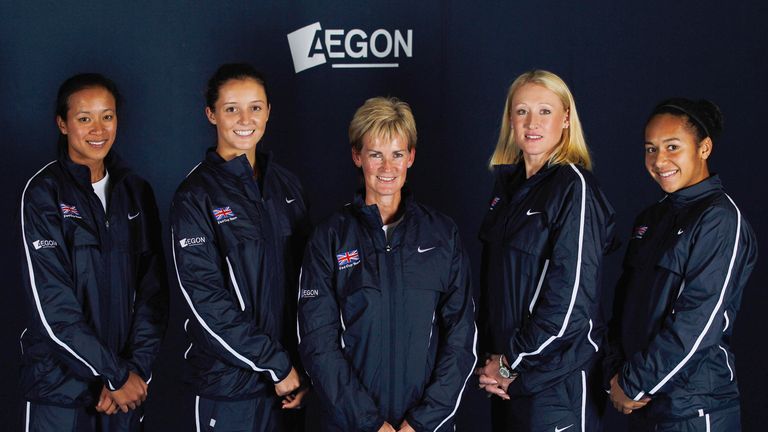 Donald Trump. Reuters/Carlo Allegri
Donald Trump. Reuters/Carlo Allegri
Donald Trump's deal to keep 800 Carrier workers in Indiana is not a broad-spectrum jobs policy — though if the $7 million, 10-year price tag reported by The Wall Street Journal summarizes the deal's full fiscal cost, it looks like it may have been a pretty good value, at just $875 per year per job not moved to Mexico.
But the narrow deal also reflects something Trump understands about the broad politics of jobs that few national politicians in either party have managed to grasp.
Over the last couple of decades, wage growth has lagged behind economic growth, and participation in the labor force has declined. These are our core economic challenges.
In that environment, Trump has focused much of his economic messaging on one correct core idea: What most people want is to be able to comfortably support themselves and their families with the income from a job that pays steadily rising wages. And he'll work hard to make that goal a reality for more Americans — including by bullying and bribing companies into keeping jobs in America.
The idea that good-paying jobs are the central goal of economic policy may sound uncontroversial, even trite — but it's a significant departure from standard Republican and Democratic messaging on the economy.
Other Republicans have not gotten this right
Consider the two phases of pre-Trump Republican economic messaging during this century.
President George W. Bush promoted an "ownership society" in which ordinary people got to enjoy the rising fortunes of capital through their ownership of assets. This was an attempt to address the rising fortunes of capital relative to labor by making every worker into an owner of capital.
The problem with this idea was that most people are not rich and therefore cannot derive a large share of their income from returns to capital. They have to work for a living.
Bush's tax cuts on capital gains and dividends accrued overwhelmingly to the rich. His proposal to shift Social Security retirement savings into stocks was unpopular because of the increased risk it would have exposed retirees to in exchange for higher returns.
In practice, the main way middle-income Americans participated in Bush's ownership society was by leveraging their homes. We all know how this worked out, and why Republicans stopped talking about investment as the path to middle class prosperity after 2008.
As the labor market sputtered after 2008, Republicans shifted to apportioning blame partly to the government — which allegedly burdened business owners with so much tax and regulation and "uncertainty" that they stopped hiring workers — and partly to "takers" who don't really want to work because they receive excessively generous government benefits.
This message offered a prescription for job creation that was condescending and unconvincing, and it didn't address the wage growth question at all.
Some Republicans pushed back against this rhetorical approach — Rick Santorum, for example, argued that Republican paeans to entrepreneurship fall flat because most people want to work for a living rather than run their own business — but Trump was the party's first recent nominee to understand why it didn't work.
 A group of coal miners hold Trump signs as they wait for a rally with Republican presidential candidate Donald Trump, Thursday, May 5, 2016, in Charleston, W.Va. Associated Press/Steve Helber
A group of coal miners hold Trump signs as they wait for a rally with Republican presidential candidate Donald Trump, Thursday, May 5, 2016, in Charleston, W.Va. Associated Press/Steve Helber
Democrats have not gotten this right, either
Of course, Democrats talk constantly about the importance of creating good, middle-class jobs. But over the last eight years, their economic agenda has focused much more on uplifting the poor then strengthening and employing the middle class.
It is not surprising that a lot of voters with moderate incomes — say, two parents supporting a family of four on $60,000 a year who would feel a lot more comfortable with $70,000 — would look at the Democrats' agenda and see it as unrelated to their interests.
As Mother Jones liberal writer Kevin Drum wrote in 2014:
"Democrats do plenty for the poor. They support increases in the Earned Income Tax Credit and the minimum wage. They support Medicaid expansion. They passed Obamacare. They support pre-K for vulnerable populations. They expanded the Children's Health Insurance Program. But virtually none of this really benefits the working or middle classes except at the margins."
None of these economic policies relate directly to the problem of middle-class job creation or wages. They read to a lot of voters as "benefits for somebody else, financed with my taxes."
When Democrats have talked about ideas for middle-class job creation, they have tended to focus on: fiscal stimulus, which was blocked by Republicans in Congress after 2011 and is now close to moot as the economy approaches full employment; ideas too obtuse for most voters to view them as important to their personal fortunes (vocational education, "advanced manufacturing initiatives"); or infrastructure spending.
Maybe Democrats should have made a bigger political issue of Republicans' opposition to infrastructure spending over the last few years. But in 2016, Democrats were running against a Republican promising an even bigger infrastructure package than they were.
 Donald Trump with 2012 nominee Mitt Romney. Drew Angerer/Getty Images
Donald Trump with 2012 nominee Mitt Romney. Drew Angerer/Getty Images
What Trump understands about the politics of jobs
Trump's messaging about jobs has been much simpler and more effective than past messages from either Republicans or Democrats. He's promising to change the economy so it's easier for get a job if you want one, and he's says he's going to make sure that job pays more.
I don't think all of Trump's ideas for promoting job and wage growth are likely to work. Some would have significant negative side-effects. But contrary to the idea that his campaign was policy-free, he has a number of clear, broad ideas that aim directly at the issues of employment and wages:
- Immigration restrictions that would protect American workers from competition for jobs with foreigners.
- Trade restrictions that would make it more favorable for companies to locate production in the United States than to import goods from abroad.
- Bank deregulation to encourage more lending.
- Lower taxes on business income to encourage investment.
- Fewer restrictions on domestic energy production.
- Increased federal financial commitment to infrastructure.
- Increased military spending.
- New government benefits for childcare and maternity leave to make it easier for parents to work.
- Increased formal and informal pressure on employers to create and retain jobs in the United States.
Trump has a model of stakeholder capitalism
Obviously, much of Trump's economic plan is standard Republican fare — cut taxes, deregulate, drill for oil.
But the new elements are thematically important.
He added trade and immigration to the list of policy problems holding back the employment and wages of American citizens. This likely appealed to some voters who do not buy the idea that taxes and regulation on their employers are holding back their own income.
His focus on parental benefits, driven by his daughter, Ivanka, made clear he understands that making work work is not just about getting government out of the way.
Most importantly, unlike most Republicans, Trump applied a lot of the blame for underwhelming labor market performance to employers. The problem, according to Trump, is not just that companies are taxed too much or face too much foreign competition — it is also that they choose to close factories and send jobs overseas.
Trump promised, crudely, to stop them from doing so.
This is essentially a version of stakeholder capitalism, an idea more often associated with the left than the right. Trump is pro-capital, but he is also explicit that the reason we want thriving companies is so they can pay workers, not just so they can make profits.
With the Carrier deal, he's trying to show that his administration will use carrots and sticks to ensure that policies friendly to corporations actually turn into jobs retained and created — not just higher corporate profits.
And while manufacturing employment will likely keep declining even if Trump changes the trade landscape — because automation will tend to reduce employment even as output rises — there is a lot he can do to increase employment in construction, a sector whose expansion would improve the economic fortunes of men without college degrees who might have, in a previous generation, expected to work in manufacturing.
 Evan Vucci/Associated Press
Evan Vucci/Associated Press
Wage growth and GDP growth are separate issues
I don't think Trump will deliver the sustained 3% to 4% growth that his economic team, headed by Steven Mnuchin and Wilbur Ross at the Treasury and Commerce departments, are promising.
Demographic headwinds are strong. When the US economy averaged 3.5% annual growth, that was in large part because baby boomers and women were entering the workforce in large numbers. Now, the boomers are retiring and women's workforce participation is about flat.
I am somewhat worried that the administration's stated desire for more bank lending will lead to another asset bubble that bursts painfully. And as I have written before, I think a burst of fiscal stimulus in 2017 is likely to be less stimulative than a lot of people on the right or the left think.
But if Trump is able to push the labor share of GDP up by shielding workers from immigration and trade competition — by effectively creating a labor shortage — then few voters will care about the headline GDP growth number. They may even be willing to forgive a spurt of inflation.
I think the likely wage effects of Trump's economic policy suite are more uncertain than his detractors want to admit. In particular, a lot of economic research on the effects of trade on wages has been turned on its head in recent years. My confidence in the economics consensus that immigration does not depress native-born workers' wages is relatedly low.
Is the Carrier approach of individually negotiated deals sustainable? Probably not. Most employers do not have the same exposure to federal government contracts as Carrier's parent, United Technologies, which owns several defense contractors, so Trump won't always have this much leverage.
Trump's public jawboning of Carrier has been treated as extraordinary, but it doesn't strike me as all that different from the Obama administration's shaming of Pfizer out of pursuing a tax inversion transaction with AstraZeneca. The main difference is the government's goal was job location rather than tax receipts.
But the key question is not whether President Trump will be able to bully or bribe individual companies to create jobs, and whether he can get a good price on the bribes.
It's whether he can sufficiently change tax, trade, and regulatory policies to change the calculus so companies no longer want to offshore; and whether he create a new norm in which companies locate jobs here because they fear government or public backlash if they do not.
 Donald Trump and Todd Ricketts, his pick for deputy commerce secretary. Drew Angerer/Getty Images
Donald Trump and Todd Ricketts, his pick for deputy commerce secretary. Drew Angerer/Getty Images
Either Trump will succeed or he will fail
We'll soon see if the Trump approach works.
In the more likely event that Trump fails to arrest decades of global economic trends and deliver robust wage increases, then his detractors will be able to point at his rhetoric and say, "I told you he was lying to you."
Mnuchin and Ross made clear on CNBC on Wednesday that their top economic policy priority is a corporate income tax cut. If this policy delivers higher after-tax profits for shareholders and higher wages do not ensue, Democrats will finally have an effective way to argue that Trump is a fake populist.
Merely pointing out that Trump and his friends are rich has fallen flat, but the argument is likely to get traction if his policies make him and his friends richer while ordinary Americans stagnate.
But if Trump's opponents want to dislodge him, they would be well-advised to come up with their own story about how they will make work pay again.
Trump was right to realize what people really want is a job that pays well — not an opportunity to start their own business, and not a government benefit to offset their stagnating wages. If he fails to deliver on that, he won't change the fact that his opponents' ideas are tired, too.
This is a column. The opinions and conclusions expressed above are those of the author.









